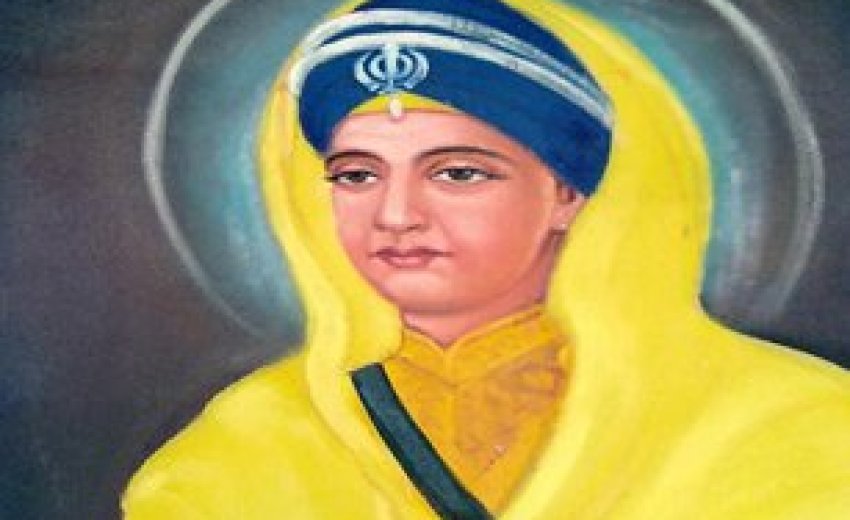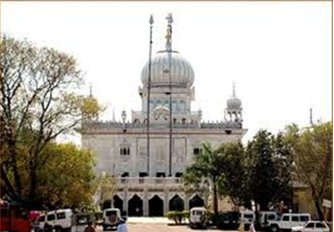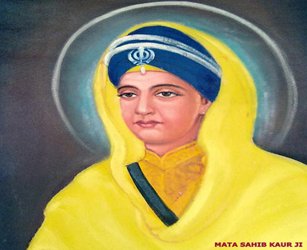Mata Sahib Kaur - Dear Mother of Khalsa
Mata Sahib Kaur, a follower of the tenth Sikh Guru, Guru Gobind Singh Ji was born in 1681 at Rohtas, Jhelum. Her parents, Mata Jasdevi Ji and Bhai Rama ji were ardent devotees of Guru Gobind Singh Ji. The devotion of her parents to Guruji influenced her very much and she also decided to devote her whole life in the service of Guru Gobind Singh Ji. She inherited from her parents, humility, love for humanity and devotion to God and was deeply influenced by Gurbani during her formative years.
In her young age, she dedicated herself to Guru Gobind Singh Ji. When the proposal of her marriage was brought for discussion to Anandpur, Guru Gobind Singh had already been married. Therefore, Guruji said that he could not have another wife since he was already married. The dilemma before the parents of the girl was that, the proposal having become public, no Sikh would be willing to marry a woman who had been betrothed to the Guru. Finally, Guruji agreed for her to stay at Anandpur but without accepting her as his wife on the term that the relationship with Mata Sahib Deva would be of a spiritual nature and not physical. The question arose, as most women desire to have children, how she could have one without being married. Then Guruji told that, "She will be the 'mother' of a great son who will live forever and be known all over the world." Guru Gobind Singh Ji blessed her by giving her a unique title of MOTHER OF KHALSA.
Mata Sahib Kaur Ji accompanied Guruji throughout his life, even during battles, serving him in every possible way. During the battle of Anandpur Sahib, Mata Sahib Kaur Ji was split from the holy family of Guruji during the siege of Fort Keshgarh where along with Mata Sundar Kaur Ji they were escorted to safety to Sri Damdama Sahib. From there, Mata Sahib Kaur Ji accompanied Guru Gobind Singh Ji to Delhi and then on to Nanded. A Majestic Gurudwara at Nanded commemorates the memory of her stay.
It was in Nanded that Guru Gobind Singh Ji informed Mata Sahib Kaur Ji of his time to leave Earth for his heavenly abode and commanded her to leave for Delhi to be with Mata Sundar Kaur Ji. Guruji gave Mata Sahib Kaur Ji five weapons as his reminder and his Insignia. These weapons are today displayed at Gurdwara Rakabganj in Delhi. Mata Sahib Kaur Ji resided in Delhi with Mata Sundar Kaur ji and lived a life of Simran and Seva. Mata Ji guided the Sikhs through period of crisis many times and issued eight decrees in the name of Khalsa.
In 1747 at the age of 66 years Mata Sahib Kaur Ji renounced her body and left for her heavenly abode. The place of Mata Ji's cremation is Gurdwara Bala Sahib Ji.
| ||||
Overall Status of Women: In Sikhism, a woman has been given equal status as that of man in all spheres of life. Guru Nanak Dev Ji, founder of Sikh religion had observed in early 1500s that why call women bad, from whom the kings take birth and from whom none can abstain. According to Sikh thought, as all things are created and inhabited by God, there is no scope for discrimination on the basis of sex of an individual in the practice of religion in life. The Sikh Gurus condemned the notion of inferiority of women and respected women for she gave life to all humans. Sikh Gurus did not approve of any inferior treatment to one-half of the humanity but rather encouraged the women who had become very meek and submissive by the sixteenth century to become courageous and independent. It may be pertinent to mention that in Sikh religion a woman is not considered a temptress, seductress, evil or any form of Maya (illusion), rather the definition of Maya, applicable to both a man and woman, has been changed to imply any force that leads one away from God. Thus, womanhood has been absolved from the long lasting stigma of a temptress in our society.
The practices of sati, female infanticide, dowry, child marriages and purdah were prevalent in India in the sixteenth century. Therefore, the Sikh Gurus who strived to uplift the status of women socially, prohibited dowry, female infanticide, sati, and permitted widow-remarriage. Similarly, the gurus insisted that women folk be considered equally competent in all respects to men and no more considered to be a property of men.
Sikh women participate as equal members in all religious functions. In mid-sixteenth century, Third Guru appointed 52 women as missionaries and four women to Manjis or diocese, in respective geographical areas in India to preach the tenets of Sikhism to men and women alike. In early eighteenth century, during the time of the Tenth Guru, women are known to have led a batch of Sikh warriors in the battle ground. Thus, all vocations are open to women, as are to men. A woman in Sikhism is considered to be equal, if not more important to society, she does not change her name after marriage, and can practice and participate in any religious ceremony as a grown-up, old or widow. Women are encouraged to be an equal participant in the workforce, with healthy self-esteem, strong mind and body. Therefore, she is entitled to same benefits, wages and perquisites.


